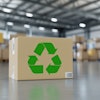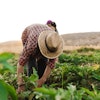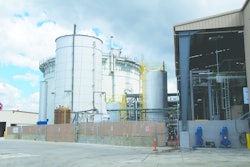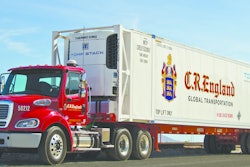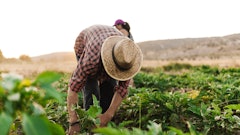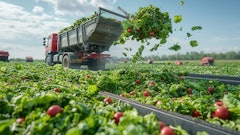Last Sunday the Cleveland Browns hosted the Pittsburgh Steelers in FirstEnergy Stadium, and while the Browns lost the game it was the day's event was the new system that aims to recycle stadium food waste into valuable renewable energy and fertilizer sources. In a in partnership with the Innovation Center for U.S. Dairy and the USDA's Food Waste Challenge, the effort will annually divert 35 tons of food waste from landfills to facilities producing sustainable, natural resources for Cleveland residents.
"This new partnership demonstrates the innovative thinking that we hoped for when USDA and EPA launched the U.S. Food Waste Challenge earlier this year," said USDA Secretary Vilsack. "Creative solutions to food waste provide communities with renewable energy opportunities and environmental benefits through reduced greenhouse gas emissions. We must better educate folks about the problem of food waste and utilize partnerships like the one in Cleveland to begin to address the issue of food waste nationwide."
The U.S. Food Waste Challenge, a joint USDA and EPA effort, is calling on others across the food chain—including producer groups, processors, manufacturers, retailers, communities, and other government agencies − to join the effort to reduce, recover, and recycle food waste.
The Browns are the first professional franchise to implement the Grind2Energy system from InSinkErator in their home stadium. Food scraps are collected and ground into a slurry, which is transported to an anaerobic digester operated by quasar energy group at The Ohio State University's Ohio Agricultural Research and Development Center (OARDC). At the anaerobic digester, which periodically adds dairy cow manure to lower acidity and boost the methane, quasar produces biogas for energy and fuel uses in addition to vital nutrients and fertilizer that can be reused for farming.
"Digester systems are something this country's dairy farms have used for years," said Tom Gallagher, CEO of the Innovation Center for U.S. Dairy. "But we have just begun to tap what is possible. Through new partnerships – whether it's with a stadium, or a hospital or a chain of supermarkets – dairy farms in all 50 states are able to house this type of system and turn food waste into food value for local communities. This proposition is just one of the goals that the Innovation Center for U.S. Dairy is setting for the immediate future."
To read more, click HERE.

